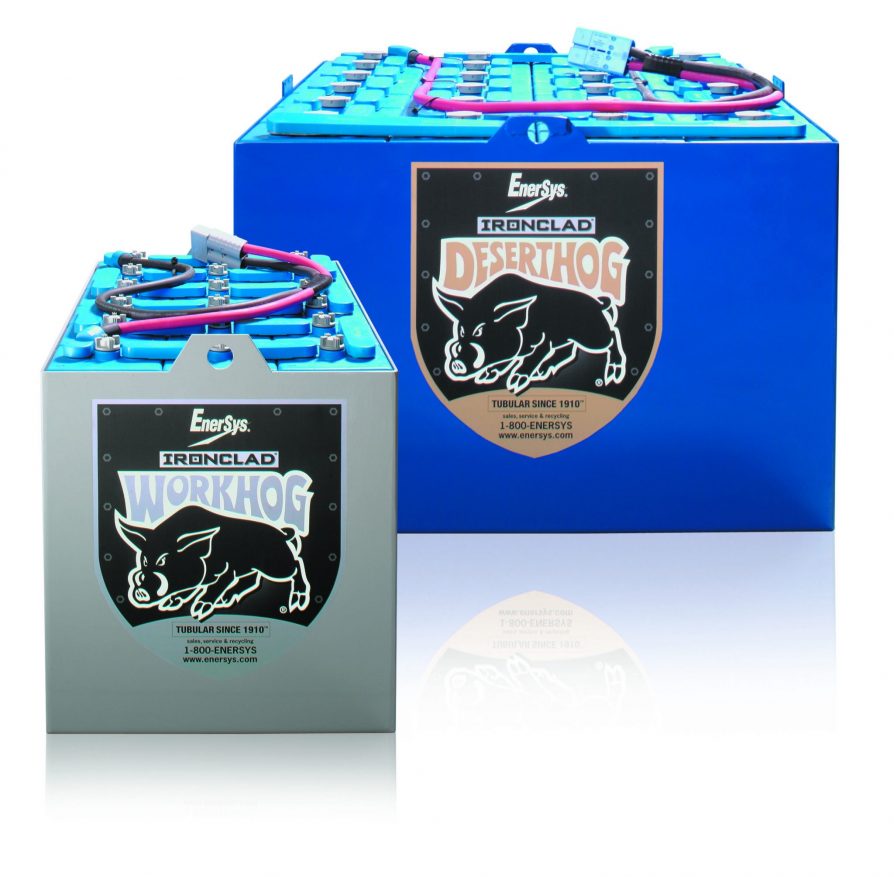)
Ironclad Workhog and Deserthog Batteries for Lift Trucks | Construction News
EnerSys has increased the amp-hour (AH) rating of its 23 in. Ironclad Workhog and Deserthog batteries from 85-AH to 90-AH. The Workhog and Deserthog batteries are the only 90-AH batteries in the 23 in. size with standard, rather than high gravity electrolyte for maximum battery life.
In order to maintain the lift truck’s constant drive and lift performance throughout a shift, an AC motor must offset a battery’s normal voltage drop during discharge by drawing more and more amps. Workhog and Deserthog batteries sustain higher voltages throughout the discharge cycle.
The Workhog and Deserthog batteries feature a square tubular positive plate design. Ironclad square tubes provide up to 84% more surface area on the positive plate, exposing more positive plate active material to the electrolyte. This combination of greater positive surface area and electrolyte provides higher sustained voltages throughout the discharge cycle.
“Ironclad batteries are well established and have proven to be the industry leader,” said Steve Spaar, director of marketing for EnerSys. “The higher sustained voltage and rugged reliability provide higher productivity, whatever the motive power application. Today’s next-generation AC lift trucks stem from the demand to move products at a faster rate. The increased amp-hour rate of Workhog and Deserthog batteries deliver greater sustained voltages to deliver power, performance and extended runtime to meet rising industry demands,” concluded Spaar.
Workhog batteries, rated at 75-, 90- and 125-AH,provide up to 20% more running time than conventional round tube or flat plate batteries. With higher sustained voltage and lower amp draw, the batteries reduce heat and strain on the lift truck’s electrical components, resulting in reduced costs for maintenance and replacement.
Deserthog batteries are rated at 90-, 100- and 125-AH, and due to the high capacity tubular plate construction, Deserthog batteries do not need to utilize unreliable low-antimony plates to achieve longer watering intervals. The higher jar design and less required sediment space allows for up to 132% more water, resulting in watering intervals of only four to six times per year, as opposed to every week.











